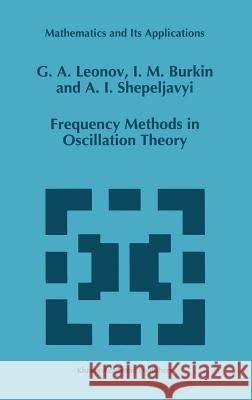Frequency Methods in Oscillation Theory » książka
Frequency Methods in Oscillation Theory
ISBN-13: 9780792338963 / Angielski / Twarda / 1995 / 404 str.
The linear theory of oscillations traditionally operates with frequency representa tions based on the concepts of a transfer function and a frequency response. The universality of the critria of Nyquist and Mikhailov and the simplicity and obvi ousness of the application of frequency and amplitude - frequency characteristics in analysing forced linear oscillations greatly encouraged the development of practi cally important nonlinear theories based on various forms of the harmonic balance hypothesis 303]. Therefore mathematically rigorous frequency methods of investi gating nonlinear systems, which appeared in the 60s, also began to influence many areas of nonlinear theory of oscillations. First in this sphere of influence was a wide range of problems connected with multidimensional analogues of the famous van der Pol equation describing auto oscillations of generators of various radiotechnical devices. Such analogues have as a rule a unique unstable stationary point in the phase space and are Levinson dis sipative. One of the pioneering works in this field, which started the investigation of a three-dimensional analogue of the van der Pol equation, was K. O. Friedrichs's paper 123]. The author suggested a scheme for constructing a positively invariant set homeomorphic to a torus, by means of which the existence of non-trivial periodic solutions was established. That scheme was then developed and improved for dif ferent classes of multidimensional dynamical systems 131, 132, 297, 317, 334, 357, 358]. The method of Poincare mapping 12, 13, 17] in piecewise linear systems was another intensively developed direction.











